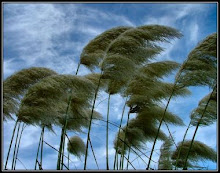Kujang ,Cleaver is a unique weapon of the West Java area
 Cleaver is a unique weapon of the West Java area. Kujang start was made about the seventh century to the 8th or 9th, made of iron, steel and prestige material, length approximately 20 to 25 cm and weighs approximately 300 grams.
Cleaver is a unique weapon of the West Java area. Kujang start was made about the seventh century to the 8th or 9th, made of iron, steel and prestige material, length approximately 20 to 25 cm and weighs approximately 300 grams.Kujang, special weapons Sunda
Replication cleaver in Bogor city monuments
Characteristics of a cleaver has tajaman side and a part, among others: papatuk / Congo (resembling a cleaver edge arrows), eluk / reparation (grooves on the back), cistern (pronounced curve in the abdomen) and eyes (small holes covered with metal gold and silver). In addition to the characteristics of very unique materials tend cleaver thin, the material is dry, porous and high in natural metal.
In Bogor Pantun as told by Anis Djatisunda (996-2000), cleaver has a variety of functions and forms. Based on the function, cleaver divided between the other four: Kujang Heritage (symbol of dignity and safety protection), Kujang Guns (to fight), Kujang Pangarak (as a ceremony) and Kujang Pamangkas (as a farming tool). While based on the blade shape is called Kujang Jago (rooster-like shape), Kujang Ciung (like birds Ciung), Kujang Egret (bird-like heron / bango), Kujang rhinoceros (rhinoceros-like), Kujang dragon (mythological animal resembling a dragon) and Kujang Kuhl (like frogs). Besides, there are also typology cleaver-shaped blade with a leather puppet heroine as a symbol of fertility.

Kujang a tool that reflects the critical acumen and power of life also symbolizes strength and courage to protect the rights and truth. Is characteristic, both as weapons, agricultural tools, symbol, decoration, or souvenirs.
In ancient times this tool is only used by certain groups of the kings, king anom, pangiwa groups, panengen, religious groups, the princess and certain women's groups
 In general, Kujang has a heritage of understanding have a certain strength that comes from the gods (= Hyang), and as a weapon, since ancient till now Kujang occupies a very special position among the people of West Java (Sunda). As a symbol or symbols with niali philosophical values contained in it, Kujang used as a symbol of aesthetics in several organizations and government. In addition, Kujang was also used as a name of the organization, unity, and of course also be used by the local government of West Java Province.
In general, Kujang has a heritage of understanding have a certain strength that comes from the gods (= Hyang), and as a weapon, since ancient till now Kujang occupies a very special position among the people of West Java (Sunda). As a symbol or symbols with niali philosophical values contained in it, Kujang used as a symbol of aesthetics in several organizations and government. In addition, Kujang was also used as a name of the organization, unity, and of course also be used by the local government of West Java Province. Kujang in the past can not be separated from public life because of its function as a Sundanese agricultural equipment. This statement is contained in the codex Kanda Punishment Trance Karesian Ng (1518 AD) and the oral tradition that developed in several regions including in areas Rancah, Ciamis. Evidence that reinforces the statement that the cleaver as farm equipment we can still see to this point in the Baduy, Banten and Pancer Pangawinan in Sukabumi.
Kujang in the past can not be separated from public life because of its function as a Sundanese agricultural equipment. This statement is contained in the codex Kanda Punishment Trance Karesian Ng (1518 AD) and the oral tradition that developed in several regions including in areas Rancah, Ciamis. Evidence that reinforces the statement that the cleaver as farm equipment we can still see to this point in the Baduy, Banten and Pancer Pangawinan in Sukabumi.
With the development of progress, technological, cultural, social and economic Sundanese people, Kujang underwent a shift in the development and form, function and meaning. From an agricultural equipment, cleaver developed into a body that has its own character and tends to be a valuable weapon symbolic and sacred. New form of the cleaver as we know it today was born of centuries estimated 9 to 12 century.
Mythology
According to the parents there that provide a very noble philosophy of Kujang as;
Ku-Jang-ji brand karuhun elderly neruskeun padamelan urang
Promise to continue the struggle elderly karuhun urang / ancestors of ways to enforce properties characteristic of humans and how the nation. What's that?
Cara-Man features a 5
Compassion (Love Love),
Manners (Ethics behave),
Railroad Usuk (Ethics Language),
Basa Budi Budi Daya,
Na Yuda Wiwaha Raga ( "Ngaji Agency").




1 komentar:
hmmm kujang i like that, tq 4 share :)
Post a Comment